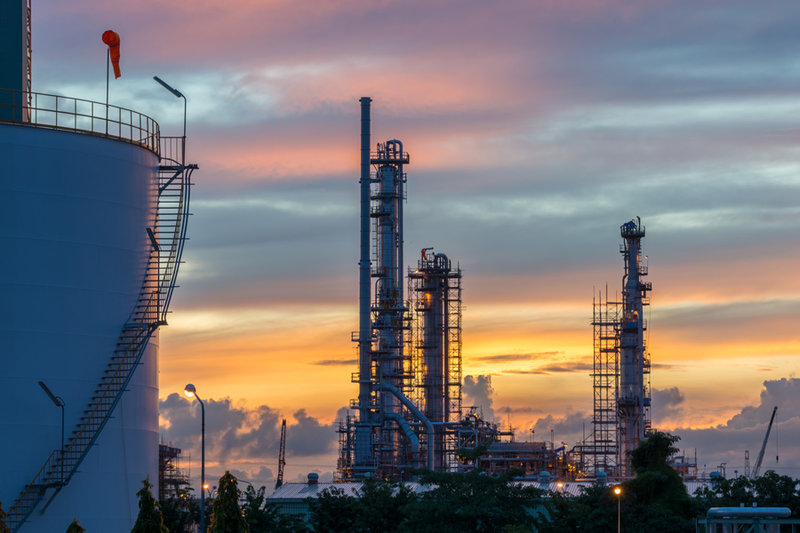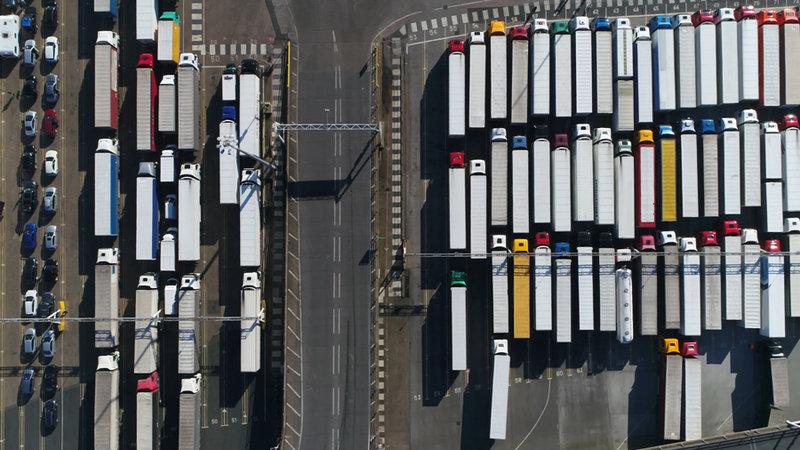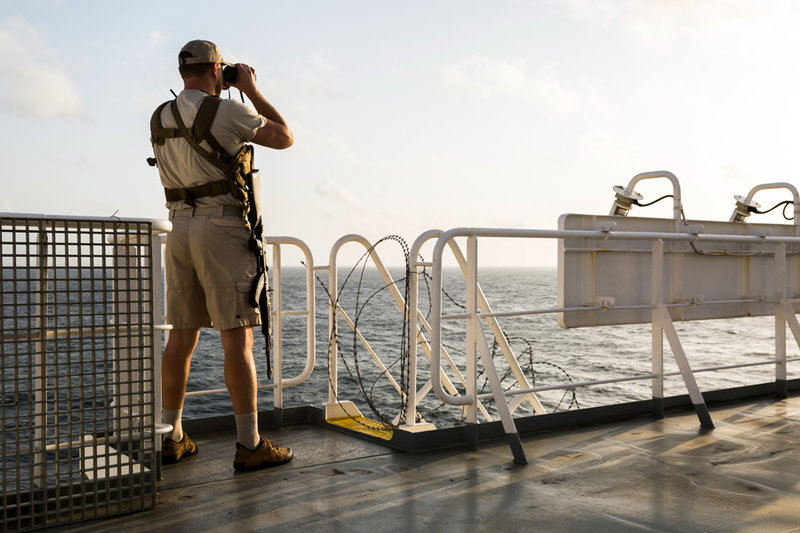Trade
Troubled waters:
shipping feels the heat of geopolitical crises
As an international sector, shipping is often vulnerable to volatile political and economic forces that can threaten vital access points, shift the volume and direction of trade flows,or send fuel prices surging. Eva Grey maps the world’s most volatile regions for shipping
The international
shipping sector has been under intense pressure over the past few years, impacted by concerns about overcapacity, volatile fuel prices, the enforcement of new environmental regulations and the challenges of digitalisation. Now, an array of geopolitical crises are looming over the industry, threatening to impact trade flows and leaving shippers uncertain of their next move.
A much-welcomed industry redress was observed in the second half of last year, after the Baltic Dry Index rose by 50% over the six-month period, and overall industry confidence hit a three-year, as analysts from the Moore Stephens shipping industry group observed.
But both old unresolved international disputes and new conflicts are contributing to an uncertain geopolitical climate, and much like a stormy sea, such forces can quickly destabilise shipping and alter trade flows.
As the London School of Economics notes, entrepreneurs, market participants and central bank officials view geopolitical risks as a key determinant of investment decisions. In 2016, 74% of CEOs of the world’s largest companies polled by PwC cited ‘geopolitical uncertainty’ as their second most important concern.
Image courtesy of
The US-China tariff stand-off
The ongoing tariff dispute between the US and China is threatening to approach a full-on trade war, with both sides imposing higher levies on billions of dollars’ worth of imports, while experts fear that the crumbling political relationship between the two superpowers might have a detrimental effect on container shipping lines.
According to geopolitical intelligence platform Stratfor, the $50bn in tariffs officially announced by the US, as well as China's retaliation, would have put nearly 7% of the US-China container trade at risk.
International trade already relies heavily on a handful of transit chokepoints that are already over capacity
However, while such tariffs would not influence the actual volume of goods being transported – as market demand isn’t necessarily affected by spur-of-the-moment political decisions – they could potentially change the direction in which goods travel.
This is tricky in itself, as international trade already relies heavily on a handful of transit chokepoints that are already over capacity, and switching up these shipping lanes could cause further complications, lengthen transport times and burden shippers with additional costs.

Image courtesy of
Svein Kleven is senior vice president of engineering and technology for Rolls-Royce. Image courtesy of Rolls-Royce
US sanctions on Iran
The fraught relationship between the US and Iran is another source of worry for shipping insiders.
The next wave of sanctions, which will take effect in November, targets the Iranian shipping industry in particular, with companies including the Islamic Republic of Iran Shipping Lines (IRISL), South Shipping Line Iran, and their affiliates to be most affected. These sanctions will comprise of restrictions on providing insurance to a wide range of Iranian industries, including shipping, sanctions on Iran's port operators, shipbuilders, and shipping lines and sanctions on petroleum-related transactions with the National Iranian Oil Company. Iran’s energy and financial sectors are also being targeted.
The next wave of sanctions, which will take effect in November, targets the Iranian shipping industry in particular
Even with months still to go before these sanctions are enforced, international operators have already started pulling out of Iran in anticipation, with the Wall Street Journal reporting that Maersk Line and Mediterranean Shipping Company have already started pulling out their cargo shipments. Meanwhile in Europe, the UK, France and Germany have emphasised they will continue their trade relationship with Iran.
Despite support from Europe, the sanctions will have global reverberations, as Iran accounts for 5% of the global output of crude oil, the majority of which goes to China, Japan, India and South Korea.

Image courtesy of
Brexit confusion leaves shippers wondering
The debacle surrounding Britain’s exit from the European Union (EU) is still raging on, and while more negotiations, U-turns and much animosity are still to come, the UK shipping industry has been trying to find its bearings amid the chaos.
At the beginning of this year, Maritime UK chairman David Dingle pleaded with the government to “do this as quickly as possible because if there is no transition period the industry as a whole will be in trouble".
Failure to secure a deal will not only see delays and disruption at ports like Dover, Holyhead and Portsmouth, but also in the EU
This plea came after Dingle urged the development of a new customs agreement between the UK and EU in February last year, warning that “failure to secure a deal will not only see delays and disruption at ports like Dover, Holyhead and Portsmouth, but also in the EU at ports like Zeebrugge, Calais and Dublin.”
While the full impact of Brexit on shipping – from general market conditions to border controls, cabotage, ports and terminals – is still unknown, the British International Freight Association noted that “a slowdown in UK GDP will mean a slowdown in UK maritime trade”. However, in the long term, as trade agreements are negotiated with other, non-EU countries, the UK could work with those nations to open up new import sources and export destinations.

Image courtesy of
South China Sea dispute
At the crossroads between Hong Kong, the Philippines and Vietnam, the South China Sea is both a key shipping route and one of the world’s top resource regions, home to half a billion people who live within 100 miles of its coastline and rich in oil and natural gas.
But the region is also at the heart of an international territorial dispute, in which China uses the controversial ‘Nine-Dash Line’ to claim 90% of the territories in the South China Sea. This demarcation is contested by the Philippines, Brunei, Malaysia, Taiwan and Vietnam.
50% of global oil tanker shipments pass through the South China Sea, according to the Council on Foreign Relations
This is problematic, since as much as 50% of global oil tanker shipments pass through the South China Sea, according to the Council on Foreign Relations, making the waters one of the world’s busiest international sea lanes. It is also the easiest access route from Europe to Asia, with 33% of the world’s maritime traffic passing through these waters.
An escalation of this long-standing conflict took place in May, when Philippines President Rodrigo Duterte threatened to go to war over China’s attempts to exploit the area’s resources. The threat came after China placed long-range bombers on one of the disputed islands for the first time, fuelling fears that conflict is brewing.
Passing through this region, tankers carrying goods worth billions of dollars are often in hot waters: trespassing any demarcation lines would have tremendous consequences for international trade, and could even escalate to an armed conflict.

Image courtesy of robert cicchetti / Shutterstock.com
Rebels use Red Sea strait as political pawn
The acrimonious conflict between Yemen, Saudi Arabia and domestic rebel forces following a failed attempt to restore prosperity within the country after the Arab Spring led to what the UN has called “the world's worst man-made humanitarian disaster”.
The tragedy is unfolding at one of the most strategic trade points by sea, as Yemen sits on the Bab-el-Mandeb strait, a narrow chokepoint between the Horn of Africa and the Middle East, which serves as the gateway between the Mediterranean Sea and the Indian Ocean.
Yemen sits on the Bab-el-Mandeb strait, a narrow chokepoint between the Horn of Africa and the Middle East
The fact that the strait is a critical access point for much of the world’s oil shipments is being used as a bargaining chip by Yemen’s Houthis, who since 2015 have repeatedly threatened to either attack commercial ships passing through the 18km-wide waterway, or completely block the lane.
Several countries have flagged potential armed attacks on merchant vessels as a top risk in the area and have issued guidance for those who need to pass through these waters, including advice to use armed security staff on board for protection.

Image courtesy of